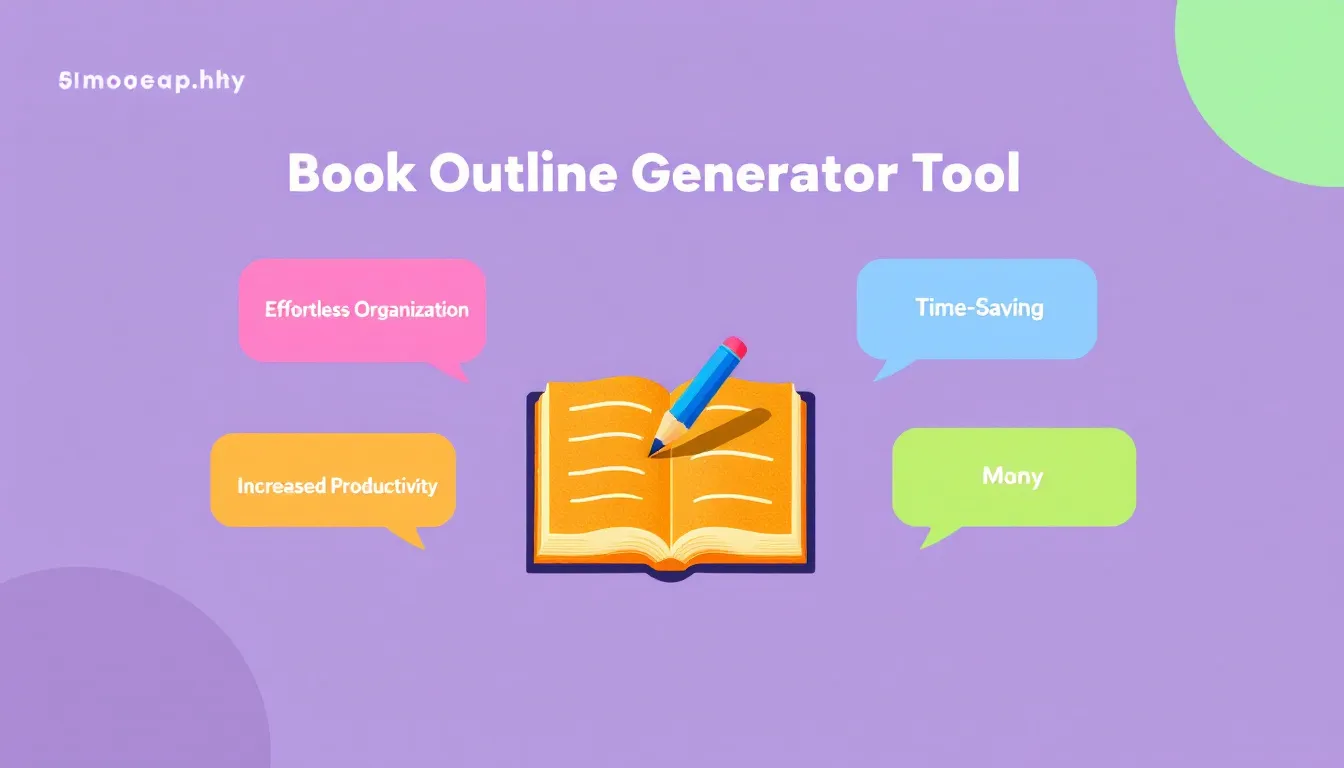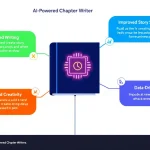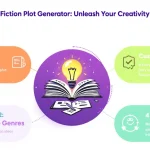Book Outline Generator
Is this tool helpful?
How to Use the Book Outline Generator Tool Effectively
The Book Outline Generator is designed to help you plan your book methodically by creating a chapter-by-chapter outline tailored to your story. Follow these steps to get the most out of the tool:
-
Describe the Book Premise: Enter a clear and focused summary of your book’s main idea. This helps the tool understand the core story.
Example inputs:- “A journalist uncovers a hidden conspiracy while investigating a small town’s strange disappearances.”
- “An exiled queen returns to reclaim her throne amidst political intrigue and betrayal.”
-
Specify the Number of Chapters: Choose how many chapters you want your book to have. Select a number that fits your story’s length and complexity.
Example inputs:- 12
- 30
-
Enter the Genre (Optional): Indicate the category your book belongs to, which guides the tone and style of your outline.
Example inputs:- Psychological Thriller
- Contemporary Romance
-
Describe Main Characters (Optional): Provide short descriptions of your key characters to help the tool incorporate their arcs and roles.
Example inputs:- Amira: A determined detective haunted by her past; Lucas: Charismatic con artist with a hidden agenda.
- Maya: Ambitious architect fighting societal norms; Jonah: Loyal friend with a secret.
-
Define Target Audience (Optional): Mention who you expect will read your book, which helps tailor the content’s style and complexity.
Example inputs:- Adults interested in psychological dramas
- Teen readers who enjoy coming-of-age stories
- Generate Your Book Outline: Click the “Generate Book Outline” button. The tool will process your inputs and produce a tailored, chapter-by-chapter outline that maps out your story’s plot, character development, and pacing.
- Review and Use the Outline: Examine the generated outline carefully. Use it as a roadmap to guide your writing. You can copy the outline to your clipboard for easy reference and editing.
Introduction to the Book Outline Generator Tool
The Book Outline Generator Tool is a practical resource that helps you create a detailed and organized chapter-by-chapter plan for your book projects. By using your inputs such as premise, number of chapters, genre, and characters, the tool crafts a clear structure that simplifies the book planning process.
Whether you are a first-time writer or an experienced author, this tool saves you time and effort by turning your ideas into an actionable outline. It helps you visualize your story’s flow, ensuring every chapter serves a purpose in moving your narrative forward. This approach enhances focus, pacing, and character development throughout your book.
Purpose and Benefits
This book planning tool offers several key advantages:
- Organizes your ideas and events logically, creating a coherent story arc.
- Balances character growth with plot progression.
- Highlights potential plot inconsistencies early in the process.
- Simplifies the writing journey by providing a clear roadmap.
- Stimulates creativity with suggested plot points and character moments.
- Reduces time spent on outlining and boosts writing productivity.
Practical Applications of the Book Outline Generator Tool
This outline generator suits a wide range of writing projects, from genre fiction to creative non-fiction. Here are some examples of how you can apply it:
1. Romance Drama
- Premise: Two childhood friends reconnect as adults but struggle with unresolved feelings and past secrets.
- Chapters: 18
- Genre: Contemporary Romance
- Main Characters: Ava: Independent artist; Ben: Successful entrepreneur with emotional barriers.
- Target Audience: Women aged 25-40 who enjoy character-driven love stories.
The tool will generate an outline that includes the characters’ reunion, emotional conflicts, key intimate moments, and the climax where they overcome challenges to be together.
2. Science Fiction Adventure
- Premise: A crew of explorers journeys to a distant planet to uncover ancient alien technology before rival forces do.
- Chapters: 22
- Genre: Sci-Fi
- Main Characters: Captain Zara: Fearless leader; Dr. Leon: Cynical scientist with a secret past.
- Target Audience: Fans of space operas and futuristic thrillers.
The generated outline will map key exploratory missions, conflicts with antagonists, technological discoveries, and character development arcs leading to a climactic showdown.
3. Non-Fiction Memoir
- Premise: Recounting a personal journey of overcoming adversity and finding hope in difficult times.
- Chapters: 14
- Genre: Memoir
- Main Characters: The author and key influential people in their life.
- Target Audience: Readers interested in inspiring real-life stories.
Although designed for fiction, the tool can be used to structure memoir chapters, highlighting major life events, reflections, challenges, and lessons learned.
Benefits of Using the Book Outline Generator for Your Writing Process
Save Time and Increase Efficiency
Instead of spending hours plotting and organizing, you get a ready-made outline in minutes. This allows you to dive into writing faster and focus on crafting your prose without the groundwork slowing you down.
Create a Structured Storyline
The tool breaks your narrative into interconnected chapters, assigning each a clear purpose. This structure guides pacing and ensures your story rises and resolves naturally with no loose ends.
Overcome Writer’s Block
When you’re stuck, referring to your detailed outline sparks new ideas and clarifies what comes next. It keeps your writing flow steady and prevents long pauses in momentum.
Enhance Story Coherence and Consistency
Seeing your story laid out chapter by chapter helps you spot plot holes, pacing issues, and inconsistencies before they become major problems in the draft.
Focus on Character Development
By factoring in your main characters and their arcs, the outline ensures your characters grow meaningfully alongside plot events, keeping readers invested in their journeys.
Maintain Flexibility and Creativity
Use the outline as a foundation, not a rulebook. You’re free to adapt, expand, or reimagine chapters to fit your unique voice and creative vision.
Addressing Common Writing Challenges with the Book Outline Generator
Organizing Complex Stories
For intricate plots with multiple viewpoints or timelines, the tool breaks the story into manageable chapters, helping you weave different elements cohesively.
Balancing Plot and Character Arcs
It balances big plot events with moments that develop characters, ensuring emotional depth and plot momentum are well matched.
Managing Pacing Throughout the Book
The outline spaces key scenes evenly so your story flows smoothly without dragging or rushing critical moments.
Incorporating Subplots Naturally
Subplots gain appropriate focus and timing, complementing the main storyline without distraction.
Consistent Thematic Development
The outline suggests ways to interweave themes across chapters, creating a stronger, unified message in your book.
FAQ: Common Questions About the Book Outline Generator Tool
Q1: Can I use this tool for non-fiction books?
Yes, while it’s mainly for fiction, you can customize the generated outline for non-fiction formats, like sections for case studies or research chapters.
Q2: How detailed are the generated chapter descriptions?
Chapters provide a clear overview of key events and focus areas. They guide your writing without limiting your creative freedom.
Q3: Can I generate multiple outlines for the same idea?
Yes. Running the tool multiple times for the same premise can offer different perspectives on structure and pacing.
Q4: Is the generated outline fixed?
No. View the outline as a flexible starting point. Adjust it freely to fit your unique story and style.
Q5: Can this tool help me overcome writer’s block?
Definitely. When stuck, the outline provides direction and inspiration, helping you move forward with your manuscript.
Important Disclaimer
The calculations, results, and content provided by our tools are not guaranteed to be accurate, complete, or reliable. Users are responsible for verifying and interpreting the results. Our content and tools may contain errors, biases, or inconsistencies. Do not enter personal data, sensitive information, or personally identifiable information in our web forms or tools. Such data entry violates our terms of service and may result in unauthorized disclosure to third parties. We reserve the right to save inputs and outputs from our tools for the purposes of error debugging, bias identification, and performance improvement. External companies providing AI models used in our tools may also save and process data in accordance with their own policies. By using our tools, you consent to this data collection and processing. We reserve the right to limit the usage of our tools based on current usability factors.







